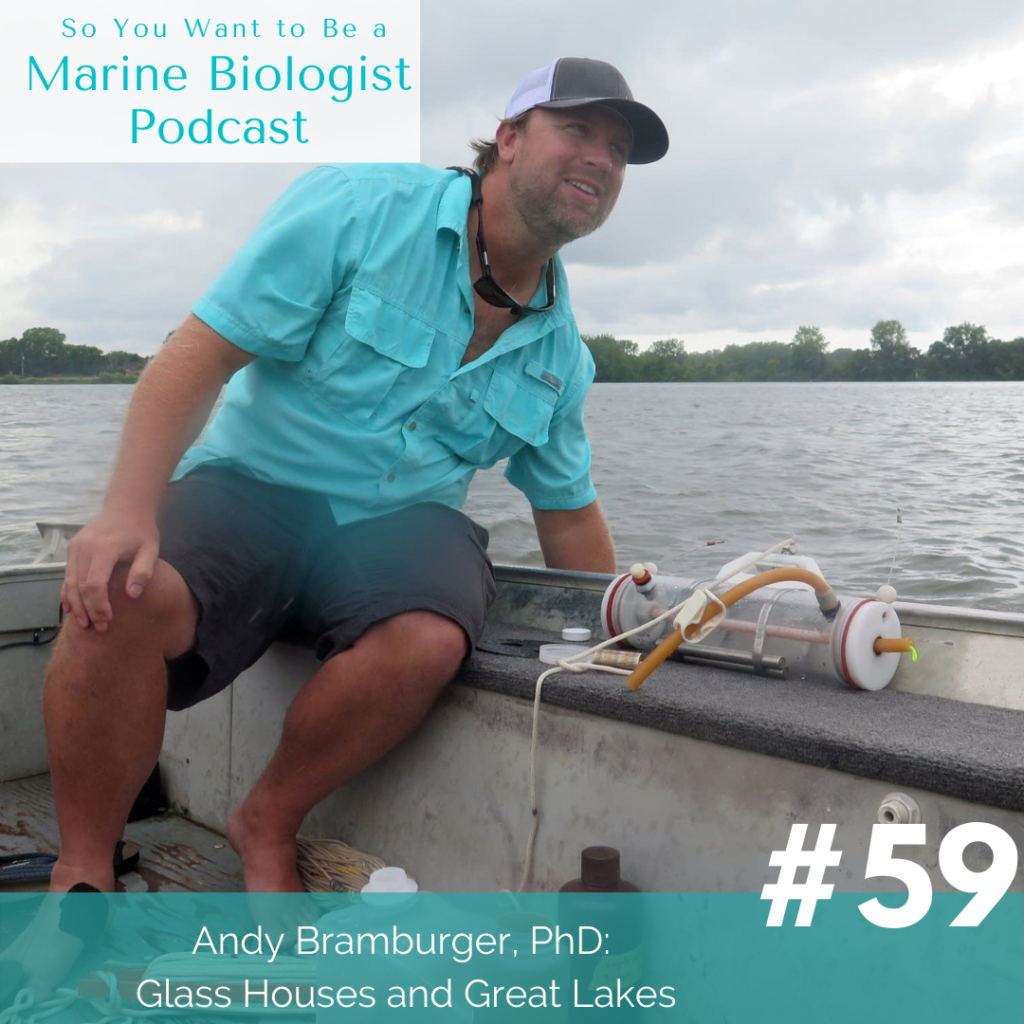Andy Bramburger is a researcher with Environment and Climate Change Canada. In addition to the numerous scientific papers and publications, Andy’s work has also been featured in National Geographic. In this episode we chat about how something so tiny it can only be seen with a microscope influences the entire planet, and how we, in turn, influence it. Andy also breaks down the similarities and differences- surprisingly few- of oceanic work and working on the Great Lakes.
Connect with Andy: Twitter|website
Quick Links
Plastic fibers mimicking algae
Surfing in the Great Lakes
Jacques Cousteau
Diatoms
Diatom Mosaic
Everglades National Park
Periphyton
Paleolimnology
Cultural Eutrophication
Lake Trout
Walleye
Chinook Salmon
Rainbow Trout
Quagga and Zebra Mussels
Alewife
Round goby
Red tides
Dinoflagellate
Algae Blooms
Blue green algae
Transcriptomics
Cyanos.org
iNaturalist
Environment and Climate Change Canada
Show Notes
1:09 Andy begins the episode talking about how all the Great Lakes are connected. They have a very similar food structure to the ocean, meaning they suffer from many of the same environmental issues as oceans including pollution and more recently, plastics.
5:10 Surfing on the Great Lakes…yes, there are large enough waves to do that! The period between how far apart the waves come are a lot shorter and it’s very cold. Andy finds the best time to go is during November and December.
7:00 Growing up swimming at beaches around Lake Erie and Lake Ontario pulled Andy towards a career studying the ecology of the Great Lakes.
11:40 Diatoms are single celled algae with different species occupying many different habitats ranging from a puddle on the street to the ocean. Can learn about the environment from diatoms… single celled algae, different species in different habitats. Can find diatoms from puddles to the ocean
13:00 We usually point to the Amazon Rainforest when asked where most of our oxygen comes from. It turns out that diatoms are responsible for a significant amount of the atmospheric oxygen we breathe.
20:15 Andy always knew he wanted to get his PhD. Constantly gaining new knowledge to better our understanding of the environment was what he wanted to pursue.
24:56 Due to manmade influences and meddling, the South Florida watershed through the Kissimmee River, Lake Okeechobee, and Everglades has been heavily impacted.
27:00 Through a project on diatoms in South Florida, Andy found that the water depth and how isolated water pockets are from one another impacts how the diatom community structure works. Renaturalizing the environment made everything a little more homogenized…whether that’s a good or a bad thing, we are still unsure.
29:00 Andy talks about how we have this idea that pristine systems are what they were before European Colonization, but often we find that we can’t put it back to how things were because we’ve done so much to manipulate the landscape since then.
44:00 Andy talks cyanobacteria (also known as blue green algae) which is a huge environmental issue in fresh water bodies. They’re bacteria that photosynthesize so not technically an algae. Upon drinking water with blue green algae, animals such as dogs can die and humans can become ill.
47:00 Not strictly high nutrient or warm water cause algae blooms. Andy talks about how they are happening in more isolated, un-impacted areas such as the Boundary Waters. It could be that they’re changing quickly. It’s an area where we have a lot to learn.
51:40 What he would do with unlimited funding- look at how and why algae is rapidly changing in the Great Lakes. Look at different algae from different places and see what genes are turned on based on different environmental pressures.
1:00:00 Conservation ask- report algae blooms! Visit your lake and be vigilant by taking pictures and recording what you see. Apps like iNaturalist are great for that. Cyanos.org is dedicated to tracking harmful algae blooms. This will help increase people’s awareness of the Great Lakes and create a lot more data for scientists to use and understand. Go citizen science!
